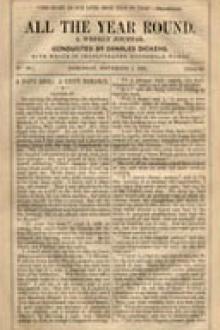Struggles and Triumphs - P. T. Barnum (top 20 books to read txt) 📗

- Author: P. T. Barnum
Book online «Struggles and Triumphs - P. T. Barnum (top 20 books to read txt) 📗». Author P. T. Barnum
“Well, Barnum, I declare, this is quite a new idea; I never saw the like before.”
“No?” I faintly inquired, with something like reviving hope.
“No,” said Clark, “and I hope, with all my heart, I never shall again.”
But the Knickerbocker spoke kindly of me, and refrained from all allusions to “the Cataract of Niagara, with real water.” Some months after, Clark came in breathless one day, and asked me if I had the club with which Captain Cook was killed? As I had a lot of Indian war clubs in the collection of aboriginal curiosities, and owing Clark something on the old Niagara Falls account, I told him I had the veritable club with documents which placed its identity beyond question, and I showed him the warlike weapon.
“Poor Cook! poor Cook!” said Clark, musingly. “Well, Mr. Barnum,” he continued, with great gravity, at the same time extending his hand and giving mine a hearty shake, “I am really very much obliged to you for your kindness. I had an irrepressible desire to see the club that killed Captain Cook, and I felt quite confident you could accommodate me. I have been in half a dozen smaller museums, and as they all had it, I was sure a large establishment like yours would not be without it.”
A few weeks afterwards, I wrote to Clark that if he would come to my office I was anxious to consult him on a matter of great importance. He came, and I said:
“Now, I don’t want any of your nonsense, but I want your sober advice.”
He assured me that he would serve me in any way in his power, and I proceeded to tell him about a wonderful fish from the Nile, offered to me for exhibition at $100 a week, the owner of which was willing to forfeit $5,000, if, within six weeks, this fish did not pass through a transformation in which the tail would disappear and the fish would then have legs.
“Is it possible!” asked the astonished Clark.
I assured him that there was no doubt of it.
Thereupon he advised me to engage the wonder at any price; that it would startle the naturalists, wake up the whole scientific world, draw in the masses, and make $20,000 for the Museum. I told him that I thought well of the speculation, only I did not like the name of the fish.
“That makes no difference whatever,” said Clark; “what is the name of the fish?”
“Tadpole,” I replied with becoming gravity, “but it is vulgarly called ‘pollywog.’ ”
“Sold, by thunder!” exclaimed Clark, and he left.
A curiosity, which in an extraordinary degree served my ever-present object of extending the notoriety of the Museum was the so-called “Fejee Mermaid.” It has been supposed that this mermaid was manufactured by my order, but such is not the fact. I was known as a successful showman, and strange things of every sort were brought to me from all quarters for sale or exhibition. In the summer of 1842, Mr. Moses Kimball, of the Boston Museum, came to New York and showed me what purported to be a mermaid. He had bought it from a sailor whose father, a sea captain, had purchased it in Calcutta, in 1822, from some Japanese sailors. I may mention here that this identical preserved specimen was exhibited in London in 1822, as I fully verified in my visit to that city in 1858, for I found an advertisement of it in an old file of the London Times, and a friend gave me a copy of the Mirror, published by J. Limbird, 335 Strand, November 9, 1822, containing a cut of this same creature and two pages of letterpress describing it, together with an account of other mermaids said to have been captured in different parts of the world. The Mirror stated that this specimen was “the great source of attraction in the British metropolis, and three to four hundred people every day pay their shilling to see it.”
This was the curiosity which had fallen into Mr. Kimball’s hands. I requested my naturalist’s opinion of the genuineness of the animal and he said he could not conceive how it could have been manufactured, for he never saw a monkey with such peculiar teeth, arms, hands, etc., and he never saw a fish with such peculiar fins; but he did not believe in mermaids. Nevertheless, I concluded to hire this curiosity and to modify the general incredulity as to the possibility of the existence of mermaids, and to awaken curiosity to see and examine the specimen, I invoked the potent power of printer’s ink.
Since Japan has been opened to the outer world it has been discovered that certain “artists” in that country manufacture a great variety of fabulous animals, with an ingenuity and mechanical perfection well calculated to deceive. No doubt my mermaid was a specimen of this curious manufacture. I used it mainly to advertise the regular business of the Museum, and this effective indirect advertising is the only feature I can commend, in a special show of which, I confess, I am not proud. I might have published columns in the newspapers, presenting and praising the great collection of genuine specimens of natural history in my exhibition, and they would not have attracted nearly so much attention as did a few paragraphs about the mermaid which was only a small part of my show. Newspapers throughout the country copied the mermaid notices,





Comments (0)